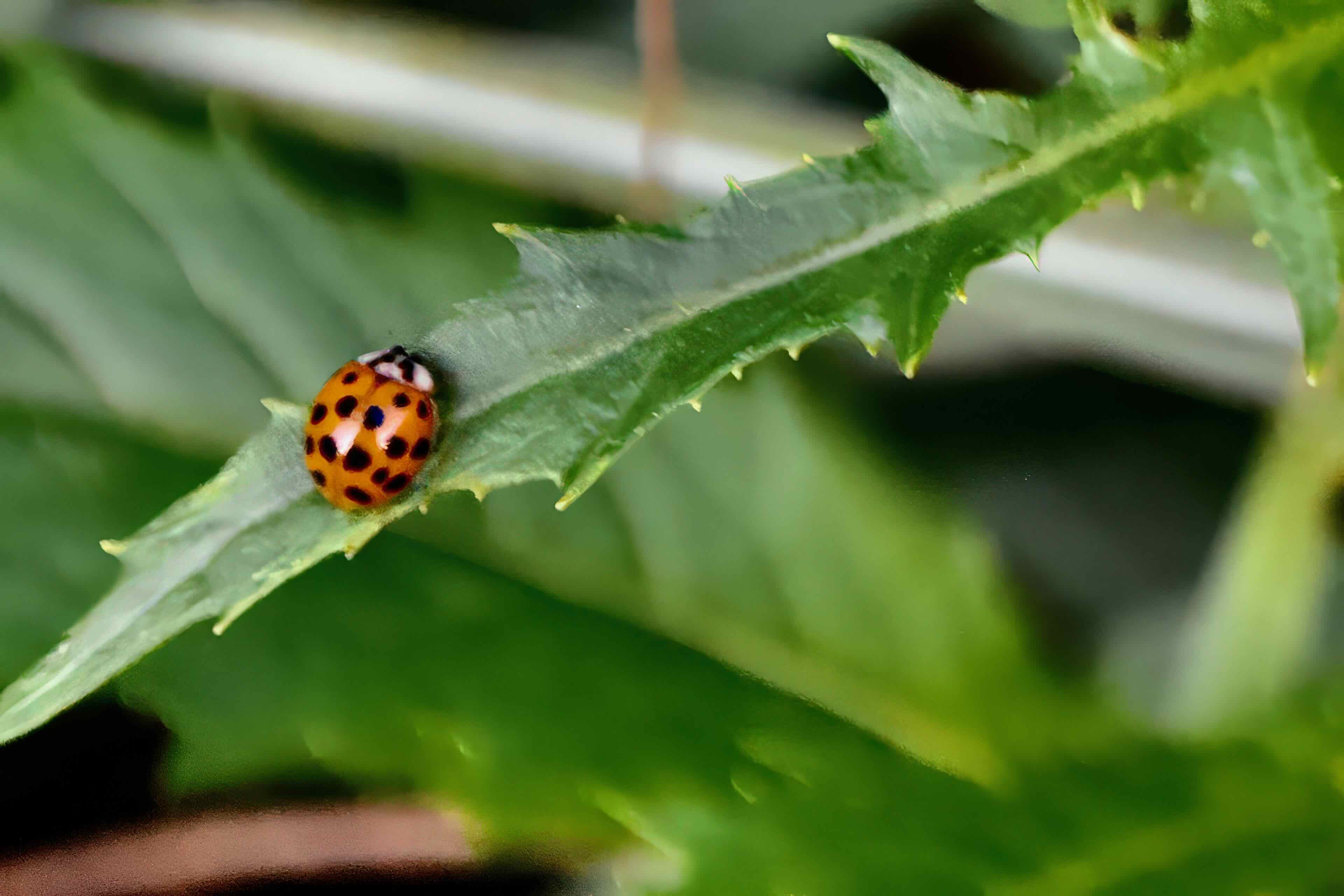
Asian lady bug, photographed at Loxahatchee National Wildlife Refuge, Boynton Beach, Palm Beach County, in Aprial 2021.
Biological control agent might be the gold standard when it comes to reducing the impacts of pest species. Find a natural enemy of your target pest and let ‘em do their thing.
No muss, no fuss, no dangerous chemicals.
We’ll it ain’t always that simple.
Case in point the multicolored Asian lady beetle, Harmonia axyridis, aka Asian lady beetle, brought into the United States as early as 1916 to help farmers wage war on the aphid population.
Multicolored Asian lady beetles do the job extremely well, but like a lot of cures, they also come with some rather annoying side effects. For one, they can invade homes in large numbers and stink up the place when they do.
They also can take to eating some of the crops they’re intended to protect when aphids are in short supply. Again, more of an annoyance than serious problem. No one is searching the hinterlands for a natural enemy of these little bugs.
At least not yet.
Some beetle basics:
There are 5,000 species of lady beetles or ladybugs worldwide, give or take, all members of the family Coccinellidae. Of these, are found in North America, most of them native. Many have aphid on their menus, so why agricultural experts determined that multicolored Asian lady beetles needed to be brought to our shores is a good question.
A side note: We North Americans call them ladybugs. To the rest of the world, they’re lady beetles. The name, ladybug is a bit of a misnomer because in scientific terms, they are not true bugs (true bugs are members of the taxonomic order Hemiptera; ladybugs or beetles are members of the order Coleoptera. The difference has to do with mouth parts).
The lady part of the name dates back to Middle Ages Europe and a link of sorts to the Virgin Mary. Europeans saw these bugs, er beetles, feasting on agricultural pests as if they were a blessing from Our Lady.
Back to our regular programming. Multicolored Asian lady beetles are similar in appearance to the ladybugs we see crawling about in our gardens and parks. They’re between a quarter of an inch to a third of an inch long, roundish in shape. They come in various shades of red, orange, yellow or even black.
Asian lady beetles invariably have 19 black spots on the backs, though the spots can be difficult to make out. They also have a black “M” or “W” (depending on which way they're facing) behind their heads. See that and you’re looking at an Asian lady beetle.
Multicolored Asian lady beetles are natives of China, Russia, Korea and Japan, imported into the United States as early as 1916 and into the 1990s to combat aphid infestations on pecan and apple crops. Besides aphids, they have an appetite for scale insects.
It wasn’t until the late 1980s and early 1990s that wild populations of the beetles started showing up. Despite a number of intentional releases, it’s believed that these populations stemmed from accidental releases.
The problem comes in the fall when temperatures begin to dip and multicolored Asian lady beetles look for a place to overwinter. A home will do nicely.
Thing is, they will come in large numbers. When agitated or squashed, they’ll release a yellow substance that both stinks and stains whatever surface they’re on.
They can bite, but generally don’t do any serious harm. They don’t carry disease, don’t burrow into structures and don’t reproduce at this stage of their lives.
When warmer weather returns, they’ll make they’re way back to the great outdoors.
The solution to the multicolored Asian lady beetle problem is simple: Seal up your home so the critters can’t get in. Females lay their eggs in clusters of 20 or so in places where there’s a ready supply of food in the form of aphids. The eggs hatch in three to five days; larval stage lasts 10 days. Young multicolored Asian lady beetles go through a pupal stage before emerging as adults. Asian lady beetles can live as long as three years but one to three months is typical.
Other common names include Halloween lady beetle, Japanese lady beetle, harlequin lady beetle and simply Asian lady beetle. They are members of Coccinellidae, the beetle family.
Loxahatchee National Wildlife Refuge
